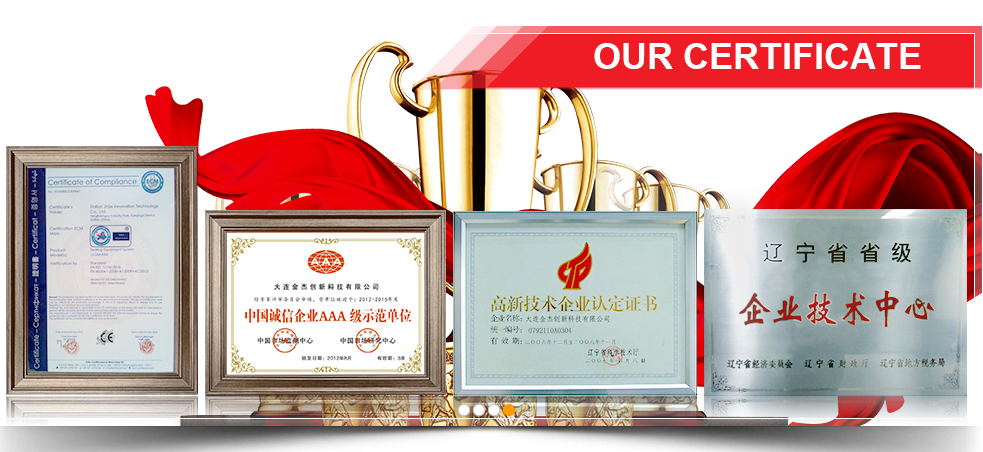Product
Certifications

Jinjie has passed a lot of well-known certifications for the product quality, managment, services, etc.
Including: ISO 9001, ISO 14001, CE, 3A, New High-tech Enterprise, many Patents, ect.
Jinjie people will...View More
What's Teflon?
Teflon = PTFE = Polytetrafluoroethylene
Polytetrafluoroethylene (PTFE) is a synthetic material accidentally invented in the late 1930s while a chemist was endeavoring to develop a new type of perfluorethylene-based refrigerant. Rather than achieving a chlorofluorocarbon, the scientist was surprised to find that the perfluorethylene used in the process reacted with the iron content of its container and polymerized under pressure. Less than a decade later, this new material was being distributed on a commercial scale and was eventually patented under the name Teflon®. It would be another 20 years before this material would hit the frying pan and become known as the first non-stick coating for cookware, however. In fact, this material was used for a variety of other purposes at first.
During World War II, PTFE was used to prevent the escape of radioactive materials from the facility designated to produce the first atomic bomb in the U.S., an objective dubbed as the Manhattan Project. This facility represented an impressive piece of real estate with more 2,000,000 square feet (609,600 sq. meters) in which to house uranium hexafluoride. Not only is this substance highly toxic and corrosive in its own right, but it also forms a dangerous gas known as hydrogen fluoride in the presence of water or water vapor. For this reason, PTFE was used as a coating for pipefittings to make them leak proof.
The exceptional insulating properties of this material made its use in electronic components ideal. For one thing, it is non-conductive, making it resistant to high electric fields. It is also highly resistant to water, heat, and chemical corrosion. In fact, it continues to be used to produce laboratory equipment and accessories that come into contact with hydrofluoric acid, which would otherwise dissolve other materials, even glass.
PTFE also possesses very low frictional properties, which is expressed as frictional coefficient. This measurement is relative and differs according to the materials brought into contact to generate or simulate friction. In terms of plastics, friction is usually observed against polished steel. To put the low friction coefficient of PTFE into proper perspective, it is the only known synthetic surface material to which the toe pads of a gecko fail to stick. This quality makes it suitable for manufacturing parts that need to resist friction, such as gears and ball bearings.
This material was eventually introduced to American households by Marion Trozzolo, founder of Laboratory Plasticware Fabricators. While Trozzolo had been producing Teflon®-coated scientific tools for a number of years, he became inspired by a French engineer who found it such an effective non-stick coating for his fishing gear that he later treated his wife’s pots and pans with it. While this experiment led to the production of cookware known as Tefal (T-Fal®) in France in the mid-1950s, Trozzolo became the first U.S. producer of Teflon®-coated cookware. In fact, "The Happy Pan," launched in 1961, earned a place of historical significance in the Smithsonian Institute and Trozzolo a name of distinction in the Plastics Hall of Fame.
 13889624989
13889624989 sales01@fipfgmachine.com
sales01@fipfgmachine.com




